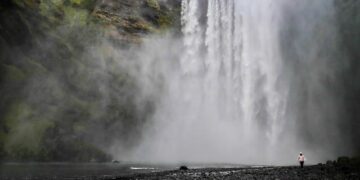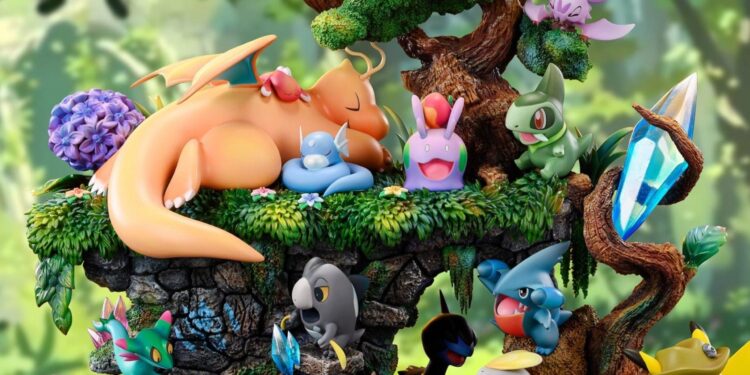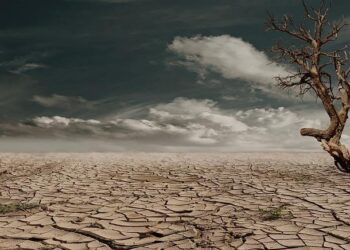Unveiling the Ecological Wonders of Wild Pokémon: A New Perspective
A recent official publication has taken a bold step into the enchanting realm of Pokémon, inviting fans and nature lovers on an extraordinary exploration of wild Pokémon as if they were real-life entities inhabiting our planet. Titled “The Ecology of Wild Pokémon,” this comprehensive book examines the behaviors, habitats, and interactions of these creatures through a lens that closely resembles wildlife studies. As the Pokémon franchise continues to enthrall audiences across generations, this work provides a novel viewpoint that intertwines fantasy with scientific inquiry, deepening our appreciation for these imaginative beings. With expert insights and breathtaking illustrations, it not only expands the franchise’s lore but also serves as an intriguing resource for those fascinated by where fantasy meets reality.
Understanding the Ecology of Pokémon in Official Publications
The latest examination of Pokémon ecology found in official texts offers an engaging glimpse into how these fictional beings might realistically engage with their surroundings. Authors utilize scientific principles to interlace aspects such as biology, behavior patterns, and ecosystem interactions. Key topics explored include:
- Diverse Habitats: Various species inhabit distinct environments tailored to their unique requirements.
- Trophic Relationships: The dynamics between different Pokémon reflect genuine predatory behaviors and symbiotic relationships.
- Ecosystem Contributions: The presence of Pokémon influences local flora and fauna significantly.
This literature further investigates social structures and migratory habits among these creatures, indicating that certain communities exhibit intricate social dynamics akin to those observed in real animal populations. This analysis draws parallels with research on herd behavior or pack formations in wildlife studies. For example, specific types are now depicted as follows:
| Type of Pokémon | Social Dynamics |
|---|---|
| Grass-type | Create groups for resource sharing and protection against dangers. |
| Water-type | Exhibit teamwork during hunting activities to improve survival rates. |
| Flying-type | Migrate collectively to maximize breeding success and food availability. |
Valuable Insights for Trainers from an Ecological Viewpoint
This new official guide delves into the complex interplay between various species of Pokémon and their environments while providing trainers with a distinctive perspective on their encounters. Gaining insight into each type’s ecological role can greatly enhance training techniques and overall care strategies for trainers. Here are some recommended approaches:
- Cultivate Habitat Knowledge: Investigate natural habitats where specific types thrive to better replicate those conditions during training sessions.
- Nurture Biodiversity: Vary your training roster regularly to develop diverse skill sets among your team members—similar to how ecosystems rely on multiple species for stability.
- < strong > Advocate Sustainable Practices: Use environmentally friendly materials when acquiring gear for your Pokemon while ensuring respectful interaction with local wildlife.
-
Moreover , trainers should consider ecological balance when assembling their teams . Opting for Pokemon from different categories can lead to more adaptable teams , much like maintaining diverse ecosystems promotes resilience . Below is a comparison highlighting various types alongside their ecological functions :
Type Of Pokemon Ecological Function
< / th < / tr < /thead >Their presence helps regulate temperature while supporting aquatic life systems. < tr >< td >Grass Pivotal in oxygen production; stabilizes soil essential for land conservation. < tr >< td >Fire Cleanses underbrush promoting new growth which enhances biodiversity. Real-World Ecology’s Influence on Strategies & Conservation Efforts within the World of Pokemon
As we navigate through both fantasy realms alongside tangible realities , concepts presented within this latest book illuminate potential interactions between fantastical creatures & surrounding environments . This exploration captivates fans while offering practical gameplay strategies based upon principles derived from actual ecology . By integrating real-world ecological concepts , players may refine team compositions by considering factors such as diversity among species , habitat specialization & predator-prey relationships .
For instance , understanding which pokemon flourish under particular biome conditions could yield more effective battle tactics . Players might want consider implementing strategies like :
- < strong style = "font-weight : bold ;"
Habitat Awareness: Choose pokemon suited specifically towards terrain characteristics present at battle sites .
- < strong style = "font-weight : bold ; Diversity In Team Composition: Combine varied types effectively countering opponents’ strengths .
- < strong style =" font-weight:bold ;
Environmental Adaptation: Utilize moves enhancing performance based upon prevailing weather conditions .
Additionally , adopting this newfound perspective encourages conservation initiatives beyond gaming realms . Just like trainers strategize safeguarding teams against challenges faced by opponents; similar methodologies apply towards protecting actual wildlife populations too!
The book illustrates delicate balances existing within ecosystems drawing parallels towards ongoing efforts aimed at preserving endangered species along with vital habitats around us today! A framework outlining potential conservation strategies inspired directly from pokemon ecology appears below:































